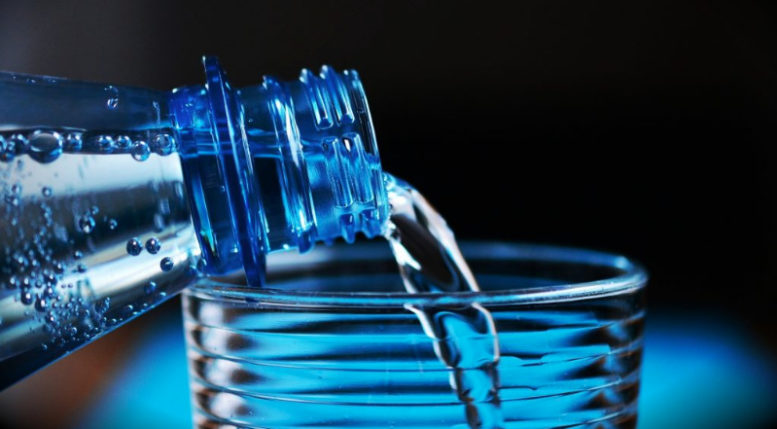Regulations surrounding potable water on ships. In August 2013, the Maritime Labour Convention (MLC) started to enforce their regulations (MLC 2006), aimed at maintaining high quality drinking water onboard ships, to protect crew from waterborne health risks. Ship owners, managers, shipyards and crew manning agencies must all understand how the regulations titled, ‘Food and Catering: Provision of Food and Fresh Water’ affect them and develop and implement measures to ensure ongoing compliance with the requirements. Annex 2, relates specifically to freshwater loading and supply arrangements, disinfection, storage, distribution systems and maintenance. The minimum requirements needed to ensure the supply of drinking and fresh water are outlined, as well as measures to prevent any risk of contamination. It’s possible to prevent waterborne disease outbreaks and toxic poisoning due to contaminated potable water. The contributing factors to outbreaks and illness emphasize the need for hygienic handling of water along the supply chain from source to consumption.
Developing a Fresh Water Safety Plan. The most effective means of ensuring the safety of a fresh water supply is through the use of a risk assessment and management approach that covers the whole process from loading to delivery at the tap and includes a planned maintenance system. All of the information gathered should be used to develop a Fresh Water Safety Plan (FWSP), particularly for ships with a complex system, which could be incorporated into the ship’s planned maintenance system. A FWSP should be based on: system assessment and hazard analysis (including an assessment of source water loaded on to the ship); a management plan and control measures (the selection and operation of appropriate treatment processes); a monitoring and corrective action system in accordance with the FWSP (the prevention of contamination/re-contamination during storage and distribution.) According to advice in MLC 2006, as well as observing the rules for classification and construction of seagoing ships stated by the relevant classification societies, the following sources should be utilized when formulating a FWSP:
- International Organization for Standardization – Sanitary design and construction of ship water supplies.
- WHO Guide to Ship Sanitation
- Health and Safety Executive’s approved Code of Practice and Guidance for Control of Legionella Bacteria in Water Systems.
Potable water testing as part of a Fresh Water Safety Plan. Regular potable water testing is vital as part of an effective monitoring system in a FWSP. Potable water test kits are designed to ensure the maintenance of high quality water throughout the potable water network on ships. Kits are now available that are incredibly safe, easy-to-use and cost-effective. Accurate tests give a color change in the presence of harmful indicator bacteria, which might be present in the event of contamination to the water onboard.
What’s in a potable water testing kit for ships? Drinksafe™ from Martek Marine is guaranteed to be the easiest kit to use on the market, probably because it was developed using feedback from a survey of 8000 marine decision makers. The kit includes more tests than all other kits, is designed to last 18 months, and meet all compliance requirements, including GUARANTEED compliance with MLC 2006. Each Drinksafe kit includes: 500 DPD1 free chlorine tests with comparator disc; 500 DPD3 total chlorine tests with comparator disc; 500 pH tests with comparator disc; 250 high range chlorine (super-chlorination) tests with comparator disc; a colour comparator, test tubes, a tablet crusher & brush; 25 e-coli/coliforms tests with sterile containers; 40 bacterial plate tests with syringes; an incubator & UV lamp; goggles & disposable gloves; a test log-book, and a manual and training DVD which shows you how to take samples, and do the tests. Depending on your Charterers requirement, you can purchase the Drinksafe kit or the Drinksafe MAX™. The Drinksafe standard kit is fully compliant for peace of mind and safety; for the crew, Drinksafe MAX has the added benefit of copper, iron, enterococci and turbidity, and we also have legionella as an add-on.
What are the recommended potable water testing kits for marine industry use? The world’s largest shipping companies trust Drinksafe to take care of the wellbeing of their crew and passengers and there’s good reason why they do. Drinksafe MAX has been created to ensure you can provide everything required upon inspection, including testing plates for copper, iron and enterococci, plus a logbook for all testing results. In contrast to the 18-month shelf life of Drinksafe kits, most other comparable kits only last for 3-months! Easy to use, Drinksafe will provide your vessel with simple equipment that anybody can use. It really is the simplest to use potable water testing kit on the market. There are no glass ampoules (which means no breakages), no instruments for calibration, no messy Thio-Bags, and finally no need for sample dilution pots. Affordable spare parts are available on stock and it’s possible to purchase individual components of each kit, meaning there’s no need to re-buy a new kit, simply replace the parts used. This makes Drinksafe incredibly economical, without risking crew safety.
